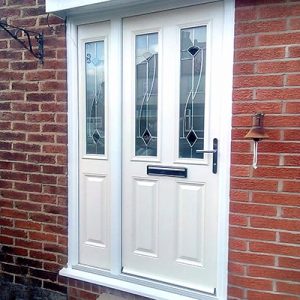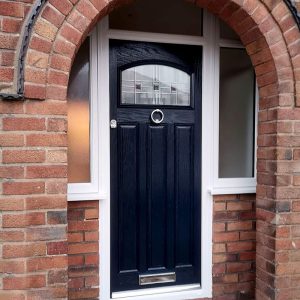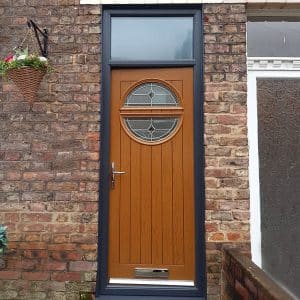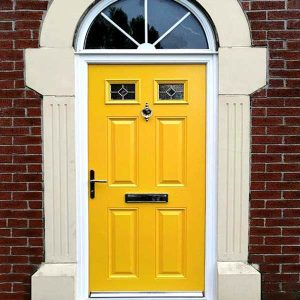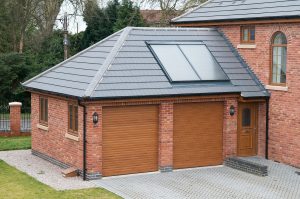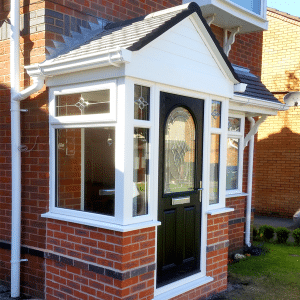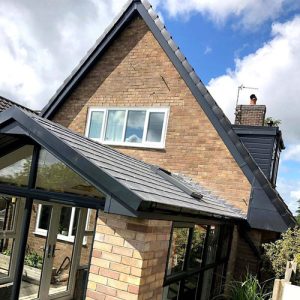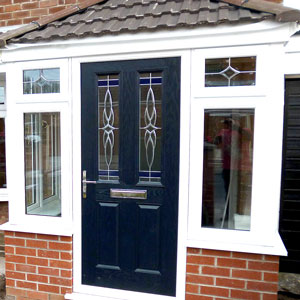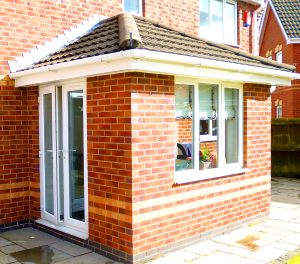Flush casement windows offer a sleek, traditional look that combines both style and function. Unlike standard casement windows, which protrude slightly, flush casement windows sit level within the window frame when closed. This design brings a seamless and minimalist appeal to both modern and classic homes. Below, we’ll explore the features, benefits, and considerations that make flush casement windows a popular choice for many homeowners.
1. Defining a Flush Casement Window
Design and Appearance
A flush casement window features a sash (the part that holds the glass) that sits “flush” or level with the outer frame when closed. This flat alignment gives the window a clean, streamlined look without the slight protrusion seen in traditional casement windows. Originally, flush casement windows became popular in older homes, especially in Europe, because of their classic aesthetic. Today, they appeal to those who appreciate a refined, minimalist design that works well with both traditional and contemporary architecture.
Opening Mechanism
Flush casement windows use side-mounted hinges, allowing them to open outward from the frame. This design creates easy access for ventilation and provides an unobstructed view. You can choose between top-hung and side-hung options, depending on the space and ventilation needs. This versatility in opening options adds flexibility, making flush casement windows suitable for various rooms and layouts.
2. Benefits of Flush Casement Windows
Enhanced Aesthetic Appeal
Many homeowners choose flush casement windows for their aesthetic value. Their flat, streamlined appearance gives homes a sophisticated look that complements a range of architectural styles. In historic or period homes, flush casements maintain an authentic look that adds charm, while in modern homes, they deliver clean lines and a contemporary feel. The lack of visible overlap between the sash and frame creates a visually seamless effect, boosting curb appeal.
Improved Security
Flush casement windows often come with high-security features, making them a solid choice for safety-conscious homeowners. Many include advanced locking mechanisms, such as multi-point locks, which secure the window at multiple points along the frame. This feature not only enhances security but also keeps the window tightly sealed, reducing drafts and improving energy efficiency.
Superior Energy Efficiency
The close-fitting sash design of flush casement windows improves insulation, keeping out drafts and minimising heat loss. By sitting level with the frame, flush casement windows achieve a tighter seal, which can help reduce energy bills by keeping the indoor temperature more consistent. Many manufacturers also offer double- or triple-glazed glass options, which enhance insulation further and provide additional soundproofing benefits.
Low Maintenance
Flush casement windows require minimal upkeep, especially when you choose materials like uPVC or aluminium. These materials resist rot, rust, and weather damage, making them ideal for areas with variable climates. Regular cleaning and occasional inspections help keep the windows in good shape, but overall, they demand less maintenance than traditional wooden frames, which may need painting or sealing over time.
3. Materials for Flush Casement Windows
uPVC Flush Casement Windows
uPVC (unplasticized polyvinyl chloride) is a popular material for flush casement windows due to its durability, low cost, and low maintenance. uPVC frames resist weathering, do not require painting, and offer excellent insulation. Manufacturers also offer uPVC in various colours and finishes, including wood-effect styles that mimic traditional wooden frames, giving homeowners more design flexibility.
Aluminum Flush Casement Windows
For a sleek, contemporary look, many homeowners choose aluminium flush casement windows. Aluminium offers strength, slim profiles, and high durability, allowing for larger glass areas that maximise natural light. Although aluminium may cost more than uPVC, it often provides greater longevity and requires minimal upkeep. Powder-coated finishes protect the metal from rust and corrosion, even in harsh weather conditions.
Timber Flush Casement Windows
Timber frames give flush casement windows a traditional, authentic look that suits period properties or homes aiming for a rustic aesthetic. Wood offers excellent insulation and a natural charm that other materials cannot match. However, timber requires more maintenance than uPVC or aluminium, as it may need regular painting or staining to protect against weather damage. Many homeowners choose engineered wood, which provides added strength and reduces the risk of warping.
4. When to Choose Flush Casement Windows
Period Properties and Heritage Homes
Flush casement windows provide an ideal choice for period properties, as they match the original architectural style often found in historic homes. Many heritage conservation areas require flush casement windows for home renovations to maintain the property’s traditional appearance. By choosing timber or wood-effect uPVC frames, homeowners can achieve a classic look with modern benefits.
Contemporary and Minimalist Designs
For modern homes, flush casement windows offer a sleek, minimalist option that aligns with clean architectural lines. Aluminium flush casements, with their slim profiles and larger glass areas, often work best in contemporary settings. The seamless design blends effortlessly with modern exteriors, providing a cohesive, sophisticated look.
Energy-Efficiency Goals
If you prioritise energy efficiency, flush casement windows with double or triple glazing, combined with uPVC or timber frames, can reduce heat loss significantly. This insulation keeps your home warmer in winter and cooler in summer, reducing the need for heating and cooling. As a result, flush casement windows support energy savings and comfort year-round.
Conclusion: Why Consider Flush Casement Windows?
Flush casement windows bring a combination of beauty, security, and energy efficiency to any home. Whether you seek a traditional look for a period property or a minimalist style for a modern build, flush casements deliver versatility and performance. With various material options and customisable designs, these windows suit diverse architectural preferences while enhancing the home’s security and energy efficiency. For homeowners looking to add style and function to their property, flush casement windows offer a worthwhile investment that complements any aesthetic.

